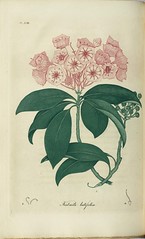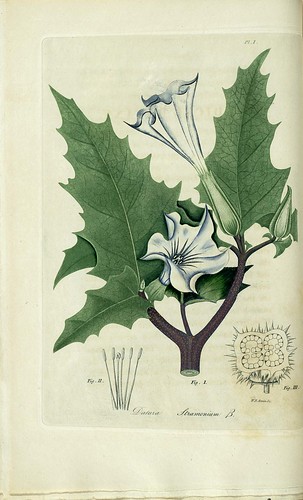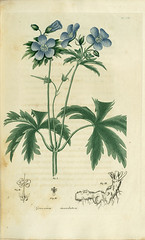The development of nomenclature mirrors the development of ordered literary thought in the evolution from orality to literacy. General and diffuse names for common things have, over time, become specific and intricate, with names allowing collective understanding to be wrapped and packaged into tight bundles of meaning. The evolution and advancement of organized and systematic naming has had dramatic implications for literacy and education within areas of study and within communication generally.
Nomenclature is a term that describes the collection of named things within a focused area of interest. The nomenclature for a traditional classroom includes chalkboard, desks, pencils, textbooks, teacher. The nomenclature for music includes notes, scales, harmony, crescendo. The nomenclature for the brain includes the glossopharyngeal nerve, the anteromedial thalamic nucleus, and the parahippocampal-amygdaloid transition area (The Humans Brain.Info, 2010). When names are consistent and hold the same meaning regardless of culture, era, or language, there is a greater ability to share and preserve knowledge.
Naming has long been (has always been?) a part of human communication, evidenced in ancient texts such as the Old Testament and texts from ancient civilizations such as the Egypt and Babylon. Peoples from both oral and literate cultures created names. During the early exploration of present day New Zealand, for instance, an explorer recorded phonetic names for animals named by the Maori tribe, an entirely oral culture. The Maori name for a “paradise duck” was pooadugghiedugghie, and for “fantail,” diggowaghwagh (McKenzie, 1985). The ancient Greeks were particularly methodical in their early endeavours to systematically observe, name and record the natural world and shared experiences, from the stars and constellations, to early forays into describing and naming concepts and principles in mathematics and science, to naming of their gods.
Nomenclature is extraordinarily wide and varied, spanning cultures, languages and areas of thought. To bring focus to the implications of naming as a text technology, this article will follow the history of naming something that has co-existed with humans since the beginning of time – plants. The history of botanical nomenclature serves as a microcosm of how systematic recording of the properties of things, standardized language, scientific/ analytical thought, and acceptance of homogenized, authoritative standards has made nomenclature a vehicle for wide distribution of collective understanding.
History of Botanical Nomenclature
First peoples utilized plants for, among other things, food, shelter, and clothing. Given the lack of recording in early times, it is impossible to pinpoint when these cultures would have named a plant for its specific purpose or properties, but we can assume that dominant species of plants with central roles in survival or cultural practice would have been named, as with other common items within early cultures. A common plant such as papyrus was in use and presumably named in Egypt as early at 2,600 B.C.E. (Seid, 2004). The book of Deuteronomy in the Old Testament was written sometime in the seventh century B.C.E. Deuteronomy Chapter 8:7-8 alludes to a number of named plants – wheat, barley, fig trees, pomegranates, and olive trees ( Wenham, 1985).
As Ong points out, all thought, including in primary oral cultures, is in some part analytic: it breaks its materials into various components (Ong, 2000). Naming can either compartmentalize and give singular meaning to parts of the whole (the parts of the body, for instance), or generalize and give meaning to a collection (the “World,” which is the sum of many parts). The ancient Greeks began to apply analytic naming to plants, identifying their common and distinguishing physical features, as well as their utility as food or medicines. One of the first botanists was Theophrastus (371-286 BC), a pupil of Aristotle. Theophrastus wrote two highly influential and enduring botanical works, “De historia plantarum (A History of Plants)” and “De causis plantarum (About the Reasons of Vegetable Growth),” in which he described over 500 different plants (Sengbusch, 2003). By modern standards this feat would appear satisfactory at best, but the impact of this kind of approach by the Greeks in particular had enormous impact on the advancement of literacy and education in general. This example of standardized and organized application of observation, recording, and authoritative publication of text and images (sketches) for the sake of information sharing in perpetuity would become the standard by which western cultures would preserve knowledge.
Theophrastus’ works maintained their status as central botanical texts for over a thousand years, due in part to the Roman domination of the western world. While the Romans appreciated and borrowed from the great works of the Greeks, they were more practical and utilitarian when it came to plants, describing ways of growing and preserving, but not spending significant time to develop the nomenclature beyond where Theophrastus had started. However, the Romans did contribute a key element that would later underpin just about all botanical (and more widely, scientific) nomenclature. This influence was the proliferation of Latin as the dominant world language. Never before had the world (taken in this context to mean the Roman dominated part of the world) had an instrument as widely distributed as Latin for common idea transmission and discourse. Though the Roman’s influence declined, Latin maintained its position as the language of broadly educated persons, especially within the natural sciences.
The Renaissance brought forth a renewed interest in plants, primarily in the pursuit of new medicines. By the 16th Century the development of the letter press made botanical texts available to the masses. Books on flora from around the globe began to find their way into hands of scholars and lay people alike, catalyzed by European botanists who joined the empirical conquests of their homelands (Sengbusch, 2003). As the depth and volume of collected knowledge grew, the need for specific naming systems became more and more apparent to isolate and report on similarities and differences. In 1794, English botanist, Thomas Martyn translated Jean-Jacques Rousseau “Lettres sur la botanique,” in which Rousseau lamented, “ Such a chaos of nomenclature, that the Physicians and Herborists no longer understood each other” (Martyn, 1794).
The time was ripe for a confluence of ideas and practices to bring order to the nomenclature of botany. The Swedish botanist, Carl Linné (or in Latin, Linnaeus) is credited with developing the systematic naming of plants, as described in his 1753 work, Species Plantarum. His system, still in common used today, “firmly applied the binomial system, where a plant name has two parts: i) a Genus name e.g. Rubus and, ii) a Species name which is a kind of qualifier. So the full name is like a noun followed by an adjective as in Rubus parvifolius – literally, the bramble with the small leaves.” (Kemp, 2002). With this model in place, botanists around the world swiftly worked to apply a standardized system of naming plants that could be shared far and wide to ensure that shared knowledge was consistent and predictable for known plants, and fully transferrable to identifying and categorizing new discoveries.
Beyond Botany – Nomenclature Allowed (Allows) Discovery to “Go Deeper”
As analytical systems grew more complex in the 17th and 18th Centuries, and more and more specialized information was gained in all areas of study, generalists became specialists in the sciences and most every other form of academic pursuit. Academies and learned societies formed, as specialists began to share their highly specialized knowledge in journals and books devoted to more and more specialized areas of interest. Early examples were “The Italian Academy of the Lynx,” founded in Rome in 1603, and “The Academy of Experiments,” founded in Florence in 1657 (Sengbusch, 2003). Specialized nomenclature played a role in this transformation. Nomenclature gave specific names to objects and ideas already discovered, froze that understanding as a known entity, and allowed scientific and/or analytical thought to delve deeper and get more and more specific. Whether it was the naming of butterflies, the analysis of novels, or the design of building, nomenclature allowed students and practitioners of the arts and sciences to coin terminology and reference points that encapsulated rich packets of meaning or specific technical norms.
As a text technology, nomenclature has had a rich history, which is only now being fully realized as the digital age seeks to collate the world’s collective knowledge into digital forms that can be shared and interpreted widely. As a text technology, nomenclature’s importance will only grow, given the vast quantity of the world’s collective knowledge that is being woven together due to advancements in translation of the world’s languages and continued collection of information. Nomenclature will continue to be used to systematically wrap our collective knowledge into bundles that can be unwrapped and repackaged with more bows and ribbons (more facts and details) by future generations.
References
Kemp, B.: Association of Societies for Growing Australian Plants (2002): History of botanical nomenclature. Retrieved from http://anpsa.org.au/APOL26/jun02-1.html
Martyn, T. (1794). Rousseau’s (J. J.) Letters on the elements of botany tr. 1785. Retrieved from Oxford English Dictionary Online.
McKenzie, D.F. (1985). Oral culture, literacy & print in early New Zealand: the Treaty of Waitangi. Victoria University of Wellington. Victoria University Press.
Ong, W. J. (2000). Orality and Literacy. New York, NY: Routledge.
Sengbusch, P. (2003). Botany: The History of a Science. Retrieved from http://www.biologie.uni-hamburg.de/b-online/e01/01a.htm
The Humans Brain.Info (2010) http://www.thehumanbrain.info/database/nomenclature.php
Seid, T.W. (2004). Interpreting ancient manuscripts. Retrieved from http://www.earlham.edu/~seidti/iam/papyrus.html
Wenham, G. (1985). The date of Deuteronomy: linch-pin of Old Testament criticism. part two. Retrieved from http://www.biblicalstudies.org.uk/article_deut2_wenham.html









